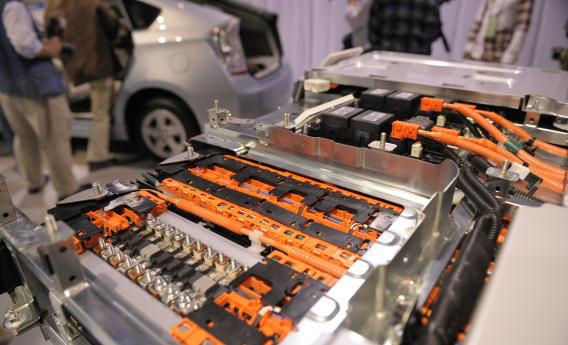The failure of the solar-energy startup Solyndra was not primarily a matter of cronyism, fraud, or even mismanagement. It was above all a product of a drastic shift in market conditions for solar energy—which is why it’s no surprise that other companies in the U.S. solar sector, including two that had received money from the U.S. Department of Energy, have followed Solyndra into insolvency.
Now comes news that another DoE-backed green energy company may be running out of juice. This time, the company isn’t in the solar sector, and it received federal money through a separate program. Still, the Solyndra comparison is inevitable, especially for critics of the Obama Administration’s green energy policy.
Reuters reports that lithium-ion battery maker A123 Systems Inc. told investors on Friday that it has only about five months’ worth of cash remaining. That’s despite a $249 million grant it got from the Obama administration, on top of a $378 million IPO in 2009. Insolvency isn’t a foregone conclusion for A123, but at this point failure wouldn’t come as a surprise.
The culprit in this case seems to be poor execution—the company suffered big losses after turning out a batch of defective batteries—coupled with lower-than-hoped-for demand for electric vehicles, which are the main end use for A123’s battery technology. Despite federal backing of its own, plug-in electric car startup Fisker Automotive has struggled, and sales of the Chevrolet Volt have been slow. Tesla has just begun shipping its latest all-electric car, the Model S sedan, but at prices upwards of $50,000, it will likely find a niche market at best.
Like Solyndra, Beacon Power, and Abound Solar before it, an A123 failure would provide yet more fodder to conservatives who see these investments as so much big-government waste. And if the bankruptcies continue to pile up, I wouldn’t be surprised if more liberals turn against the DoE’s investments as well, asking why taxpayer money should be going to private-sector startups as opposed to more traditional forms of government-funded research.
The only defense that remains is the one that has been most valid all along: Any investment in a new technology risks not panning out. That’s true for venture capital, it’s true for federal grants and guaranteed loans, and it’s true for government-funded academic research or military R&D. How many government-funded R&D projects over the decades have amounted to nothing tangible? The difference is that when they fizzle out, there are no headlines about all the millions of taxpayer dollars that have gone to waste.
